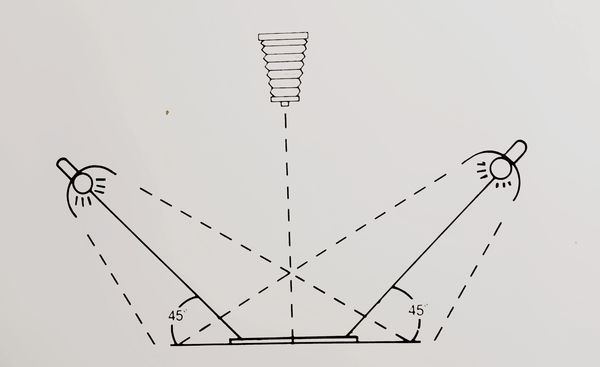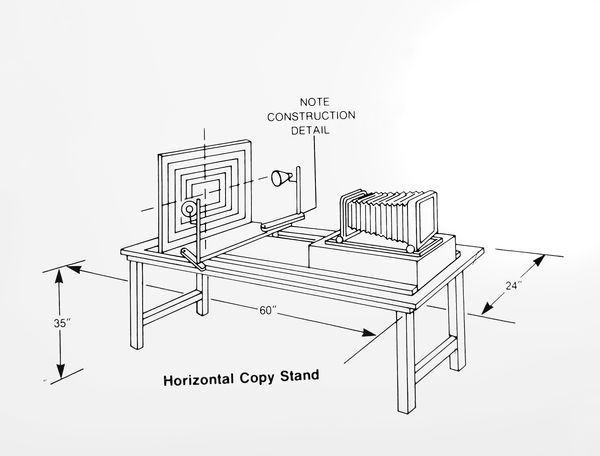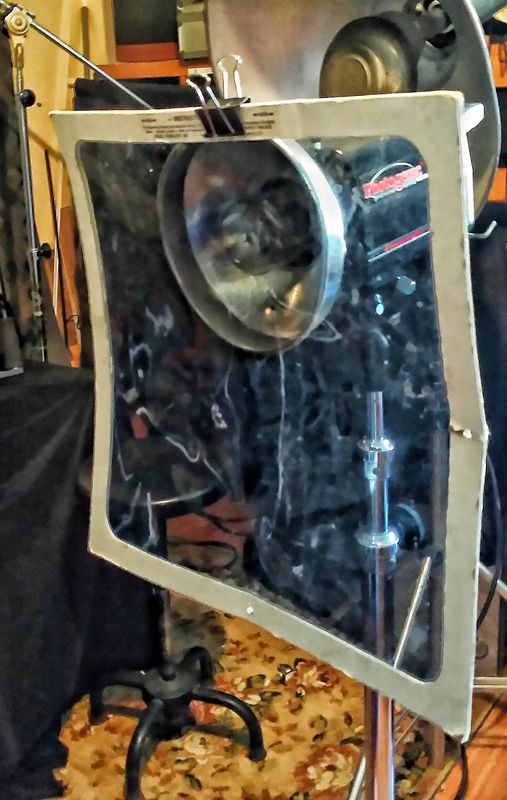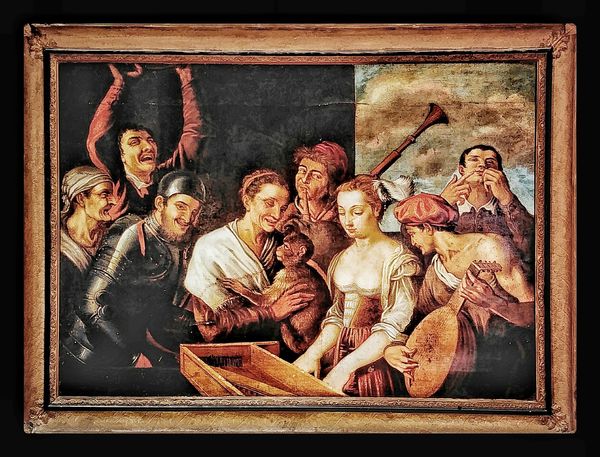What's the best camera and lens to take photos of flat artwork for under $1000?
Jun 5, 2019 16:36:31 #
I am a new artist with a dozen paintings I wish to photograph and then sell copies and/or gyclees of them online. I'm not sure what's out there, or which direction to go. Some paintings are watercolor, some acrylic, and some pastel (all flat). They range in size from 6" x 10", upwards to 36" x 72". Some of the smaller ones I might have scanned. I'm not sure if scanning the large ones would be more cost effective in the long run than taking my own photos. With my own photos, at least I have the option of some minor editing in photoshop. The mid size paintings average 16" x 20" to 28" x 40". I want to offer enlargements up to 36" x 60" without distortion. I may print some on metal or glass as well.
I saw a Sony Alpha SLT-a99ii on Amazon for sale for $500. I thought the 42 mp's might do a better job although the files would be very large, but I questioned the price as all the other 42mp's sell for 5x's more. His offer on Amazon has since been taken down (he claimed his contract ran out), and to order one has to contact him instead of Amazon. Sounded a little shady to me. The other camera that sounded good is a Nikon D850, but it's also out of my price range.
Nonetheless, any advice on what camera to buy, and what lens is appropriate for what I need to do for under $1,000, is welcome. Thanks, NL
I saw a Sony Alpha SLT-a99ii on Amazon for sale for $500. I thought the 42 mp's might do a better job although the files would be very large, but I questioned the price as all the other 42mp's sell for 5x's more. His offer on Amazon has since been taken down (he claimed his contract ran out), and to order one has to contact him instead of Amazon. Sounded a little shady to me. The other camera that sounded good is a Nikon D850, but it's also out of my price range.
Nonetheless, any advice on what camera to buy, and what lens is appropriate for what I need to do for under $1,000, is welcome. Thanks, NL
Jun 5, 2019 16:44:03 #
Jun 5, 2019 16:49:47 #
I worked with another photographer doing just this same thing for artists. There is more to this than just a camera and lens. Lighting is crucial. Diffusion of the lighting is just as crucial.
We were very successful in that artists were selling far more prints of their work at art shows than the actual paintings. But, as stated, it took a good bit of time to work out the lighting. Without that, the colors of the paintings were not visually exact.
--Bob
We were very successful in that artists were selling far more prints of their work at art shows than the actual paintings. But, as stated, it took a good bit of time to work out the lighting. Without that, the colors of the paintings were not visually exact.
--Bob
nl wrote:
I am a new artist with a dozen paintings I wish to... (show quote)
Jun 5, 2019 16:53:41 #
LWW
Loc: Banana Republic of America
NIKKOR 10-20 AFP $276.95
NIKON D5600 $546.95
Magnus DLX-357 tripod $24.99
Neewer 750II TTL Flash $52.99
B+W 72mm Circular Polarizer $76.95
Total from B&H. $978.73
NIKON D5600 $546.95
Magnus DLX-357 tripod $24.99
Neewer 750II TTL Flash $52.99
B+W 72mm Circular Polarizer $76.95
Total from B&H. $978.73
Jun 5, 2019 16:57:39 #
nl wrote:
I am a new artist with a dozen paintings I wish to... (show quote)
For a mere $1,000 go used, well used. I don't know what to recommend for you. I used to work at a museum but at that time we usually photographed paintings with 4x5" and 8x10" Copy / View Cameras! one was a vertical graphic arts 16x20" camera with a 8x10" reduction adapter back. If a customer needed a slide we might shoot 35mm film. This was all pre-digital. I have not been back to visit in years though I hear they've gone digital. Though I would imagine that means medium format digital. The cameras of that sort run from say $9,000 to $45,000!
If you plan to photograph your paintings with the intent of selling prints and posters the quality must be excellent not just mediocre for documenting your work for insurance and advertising purposes. Typical office / photo scanners are only up to Legal sized (8.5x14") and can do that well. But you'll need a camera for larger than that sized paintings. There may be a few larger scanners for sale. I would imagine there are large commercial scanners that can scan several square foot images. That would mean out to a lab or studio.
Jun 5, 2019 17:18:42 #
jdubu
Loc: San Jose, CA
What camera you use is of less importance, IMO, than the lens and lighting. Any good mid level and up camera body will produce the photos you want. Possibly a full frame DSLR would be better for your proposed results.
Decide on a camera and then the proper lens for that system. I would not get a lens that is soft at the edges or anywhere near wide angle. If you have the room, a bit longer prime lens (minimum 50mm) will provide the least distortion.
Proper lighting goes hand in hand with the right lens for what you are wanting to do. You need to learn lighting to properly if you are reproducing art.
Are you shooting your art pieces flat on the floor or table or are you shooting them hanging on a wall? You'll need a proper setup to have your camera parallel to the art. Easier to do that shooting down, a bit harder shooting to a wall because you can be level but not necessarily parallel to the wall. A tripod that allows for your type of setup along with light stands, modifiers, etc. will make your shooting easier and replicable. Your set up can be as complicated or simple as your tolerance to the quality of your finished product.
Decide on a camera and then the proper lens for that system. I would not get a lens that is soft at the edges or anywhere near wide angle. If you have the room, a bit longer prime lens (minimum 50mm) will provide the least distortion.
Proper lighting goes hand in hand with the right lens for what you are wanting to do. You need to learn lighting to properly if you are reproducing art.
Are you shooting your art pieces flat on the floor or table or are you shooting them hanging on a wall? You'll need a proper setup to have your camera parallel to the art. Easier to do that shooting down, a bit harder shooting to a wall because you can be level but not necessarily parallel to the wall. A tripod that allows for your type of setup along with light stands, modifiers, etc. will make your shooting easier and replicable. Your set up can be as complicated or simple as your tolerance to the quality of your finished product.
Jun 5, 2019 17:34:57 #
You'll get all kinds of info here some good- some...not so much ( a wide angle zoom???).
I've done this kind of stuff for years. I use a full-frame camera with a normal length 55mm (something that will usually have less distortion) or longer.
Lighting is going to be critical- does the art have a matte finish or is it reflective?
That will open up another can of worms as your camera (and you) could show up in the art. Does it have a texture you want to show off?
The biggest thing that will help with color accuracy is an X-Rite Color Checker kit and a calibrated monitor.
The Color Checker goes well beyond white balance- it is the most accurate way to get the other colors close to the original. Different camera sensors reproduce colors in different ways. Canon's reds, greens and blues (and in-between) have a different color bias than Nikon or any other brand. The Color Checker takes that bias away.
I've done this kind of stuff for years. I use a full-frame camera with a normal length 55mm (something that will usually have less distortion) or longer.
Lighting is going to be critical- does the art have a matte finish or is it reflective?
That will open up another can of worms as your camera (and you) could show up in the art. Does it have a texture you want to show off?
The biggest thing that will help with color accuracy is an X-Rite Color Checker kit and a calibrated monitor.
The Color Checker goes well beyond white balance- it is the most accurate way to get the other colors close to the original. Different camera sensors reproduce colors in different ways. Canon's reds, greens and blues (and in-between) have a different color bias than Nikon or any other brand. The Color Checker takes that bias away.
Jun 5, 2019 17:37:45 #
Jun 5, 2019 17:45:17 #
nl wrote:
I am a new artist with a dozen paintings I wish to... (show quote)
I have a friend who Epson scans her smaller watercolor/ink illustrations, photographs her medium size paintings, and makes Epson prints of all but the largest art. She has an accurate eye for color and either matches or improves the originals.
That combination can produce high quality work at a controlled price. The equipment serves many purposes, so the investment has an excellent potential to pay for itself.
As a compromise to cost how about a used Nikon D810? It should have all the megapixels you will ever need. I have no idea what would be the best copy lens, but I would go with a fixed focal length.
(I did do some copy work in my younger days of film, and having a dedicated photo set up saved a lot of retouching.)
Boris
Jun 5, 2019 18:04:41 #
jdubu
Loc: San Jose, CA
Color Checker and a calibrated workflow is essential, totally agree with Goofy
Jun 5, 2019 19:04:19 #
Doesn't matter what camera as long as the settings & the lighting are correct.
https://youtu.be/Vpj28da03JQ
https://youtu.be/Vpj28da03JQ
Jun 5, 2019 19:11:54 #
A $1,000 limit may be a tall order for a decent copy setup. You budge, beside a good camera body and lens has to include some specific lighting requirements, a good quality polarizing filter and some polarizing filter for 2 light sources.
You don't need highly specialized camera/lens gear for short runs of prints for casual sales but if you get into high volume lithographic production, the standards and accompanying requirements may entail higher quality and thereby calling for far more costly equipment.
I would suggest a full frame body and a macro lens in either a 60mm or 100mm focal length. These lenses deliver good quality at closer and moderately close distances so these will accommodate the size range you specified.
Lighting is extremely important for even exposure, control of any glare or reflection that could result from the paints, varnishes or other finishes that you apply to your paintings. Cross-polarized lighting is important not only for reflection or glare control but to obtain proper contrast and color saturation.
You can probably use LED lighting units or electronic flash. LEDs are probably less expensive and you can see exactly what you are doing- flash gear with modeling lamps would be more costly.
You can make a fixed setup with 2 lights, each placed at 45 degrees to the camera/subject axis. Each light is equipped with a plastic polarizing screen oriented according to the markings provided on the cardboard frames that retain the filters. A good optical glass CPL filter is placed on the lens. As you rotate the filter you will see the negation of glare and the increase in color saturation. You can meter the light at all 4 corners of each painting to ensure that it is even and make a few bracketed exposure of each painting.
If you create palette knife or bas relief work, you can use only one of the lights to retain the surface texture- that is called interpretative copying.
As others have alluded to, you will need some gray cards and color checking targets to keep things calibrated.
You can research the used market for the camera and lens gear. A crop-sensor can work but if you equip yourself with a better body, this may be more economical going forward. I'm sure you can fie a good used macro lens. Check with B&H, KEH, Adorama and some of the other reputable dealers.
In my commercial business, I do quite a bit of art reproduction for artists, galleries, dealers, museums, and folks who assess, authenticate and evaluate artwork. The aforementioned setup it the system I use. It may seem very complex but once you have it set up, even out the lighting and standardize your and exposure, it becomes easy and routine to record all of you work as you produce it.
Theses system works well on works of various mediums- oils, acrylics, watercolors, tempera, pen and ink, pencil sketches, etchings, etc.
I will attach a basic lighting diagram, a shot of the polarizing screen that is employed over the lights and a typical painting I have copied. This one is about 60x80 inches, hanging in a museum and could not be removed from the frame. The diagram of the copy stand and a large format camera is just to give you a basic idea of the setup. A digital camera mounted on a sturdy tripod and a mechanism to hold your paintings on the wall will work well- just keep the camera exactly parallel to the wall, level, and centered to he painting.
I wish I had better news for your budgetary questions. I have used Nikon and Canon gear for this kind of work. There are other good brands as well but perhaps it will be more likely to find some good used gear in theses makes. The polarized lighting filter material is available from Roscoe photographic and stages lighting suppliers (Google them for a dealer near you). Excellent CPL filters are made by Hoya, Zeiss, and B+W.
You don't need highly specialized camera/lens gear for short runs of prints for casual sales but if you get into high volume lithographic production, the standards and accompanying requirements may entail higher quality and thereby calling for far more costly equipment.
I would suggest a full frame body and a macro lens in either a 60mm or 100mm focal length. These lenses deliver good quality at closer and moderately close distances so these will accommodate the size range you specified.
Lighting is extremely important for even exposure, control of any glare or reflection that could result from the paints, varnishes or other finishes that you apply to your paintings. Cross-polarized lighting is important not only for reflection or glare control but to obtain proper contrast and color saturation.
You can probably use LED lighting units or electronic flash. LEDs are probably less expensive and you can see exactly what you are doing- flash gear with modeling lamps would be more costly.
You can make a fixed setup with 2 lights, each placed at 45 degrees to the camera/subject axis. Each light is equipped with a plastic polarizing screen oriented according to the markings provided on the cardboard frames that retain the filters. A good optical glass CPL filter is placed on the lens. As you rotate the filter you will see the negation of glare and the increase in color saturation. You can meter the light at all 4 corners of each painting to ensure that it is even and make a few bracketed exposure of each painting.
If you create palette knife or bas relief work, you can use only one of the lights to retain the surface texture- that is called interpretative copying.
As others have alluded to, you will need some gray cards and color checking targets to keep things calibrated.
You can research the used market for the camera and lens gear. A crop-sensor can work but if you equip yourself with a better body, this may be more economical going forward. I'm sure you can fie a good used macro lens. Check with B&H, KEH, Adorama and some of the other reputable dealers.
In my commercial business, I do quite a bit of art reproduction for artists, galleries, dealers, museums, and folks who assess, authenticate and evaluate artwork. The aforementioned setup it the system I use. It may seem very complex but once you have it set up, even out the lighting and standardize your and exposure, it becomes easy and routine to record all of you work as you produce it.
Theses system works well on works of various mediums- oils, acrylics, watercolors, tempera, pen and ink, pencil sketches, etchings, etc.
I will attach a basic lighting diagram, a shot of the polarizing screen that is employed over the lights and a typical painting I have copied. This one is about 60x80 inches, hanging in a museum and could not be removed from the frame. The diagram of the copy stand and a large format camera is just to give you a basic idea of the setup. A digital camera mounted on a sturdy tripod and a mechanism to hold your paintings on the wall will work well- just keep the camera exactly parallel to the wall, level, and centered to he painting.
I wish I had better news for your budgetary questions. I have used Nikon and Canon gear for this kind of work. There are other good brands as well but perhaps it will be more likely to find some good used gear in theses makes. The polarized lighting filter material is available from Roscoe photographic and stages lighting suppliers (Google them for a dealer near you). Excellent CPL filters are made by Hoya, Zeiss, and B+W.




Jun 5, 2019 19:51:12 #
You can get an m43 body that does 50 or even 80MP
of stationary subjects ... such as flat art ... altho you
only pay for a 16 or 20MP sensor/camera.
M43 is the smallest "professional" sensor size but for
the project you describe, there is truly zero benefit in
using a larger sensor. The benefit of the smaller size
is in price ... of both cameras and lenses :-) Bigger
stuff costs more and for this project has no purpose.
Shop well and m43 will hold close to your budget !
You should use a flat field lens [jargon, sorry, google
has details/definition] either a native [fully coupled]
m43 lens, or if you know traditional photography an
adapted legacy macro is equally useful.
==============================
You will probably need to polarize both the lights
and the camera, so avoid hot lights as they slowly
destroy their polarizer sheets. M43 cameras do not
need circular polarizers for the lens, but finding a
linear polarizer these days takes some diligence :-(
You absolutely need a good tripod.
BTW, if you intend to photo any sculpture, certain
m43 cameras do in-camera Focus Stacking. Sorry,
more jargon, more google.
.
of stationary subjects ... such as flat art ... altho you
only pay for a 16 or 20MP sensor/camera.
M43 is the smallest "professional" sensor size but for
the project you describe, there is truly zero benefit in
using a larger sensor. The benefit of the smaller size
is in price ... of both cameras and lenses :-) Bigger
stuff costs more and for this project has no purpose.
Shop well and m43 will hold close to your budget !
You should use a flat field lens [jargon, sorry, google
has details/definition] either a native [fully coupled]
m43 lens, or if you know traditional photography an
adapted legacy macro is equally useful.
==============================
You will probably need to polarize both the lights
and the camera, so avoid hot lights as they slowly
destroy their polarizer sheets. M43 cameras do not
need circular polarizers for the lens, but finding a
linear polarizer these days takes some diligence :-(
You absolutely need a good tripod.
BTW, if you intend to photo any sculpture, certain
m43 cameras do in-camera Focus Stacking. Sorry,
more jargon, more google.
.
Jun 6, 2019 05:23:56 #
I use to do that when I had a lab & studio. I used a 4x5 for the shots..plus several lens. They were high quality and sold a lot of them. Having a commercial lab made a big difference.
Jun 6, 2019 05:46:40 #
LWW wrote:
NIKKOR 10-20 AFP $276.95
NIKON D5600 $546.95
Magnus DLX-357 tripod $24.99
Neewer 750II TTL Flash $52.99
B+W 72mm Circular Polarizer $76.95
Total from B&H. $978.73
NIKON D5600 $546.95
Magnus DLX-357 tripod $24.99
Neewer 750II TTL Flash $52.99
B+W 72mm Circular Polarizer $76.95
Total from B&H. $978.73
Not a good idea at all to use a wide lens, as they are nowhere near adequately corrected for copy work. Nor will a single flash work due to reflections. You will need a macro lens or other lens that is sharp and has no CA, and does not suffer from barrel distortion like WA lenses. Two diffused light sources at 45 degree angles might be enough if they are large enough to cover the larger canvases evenly, in a completely dark room without other light sources. $1000 is really not enough to do this job correctly IMO. They will clearly be reproductions that do not faithfully resemble the originals.
If you want to reply, then register here. Registration is free and your account is created instantly, so you can post right away.







